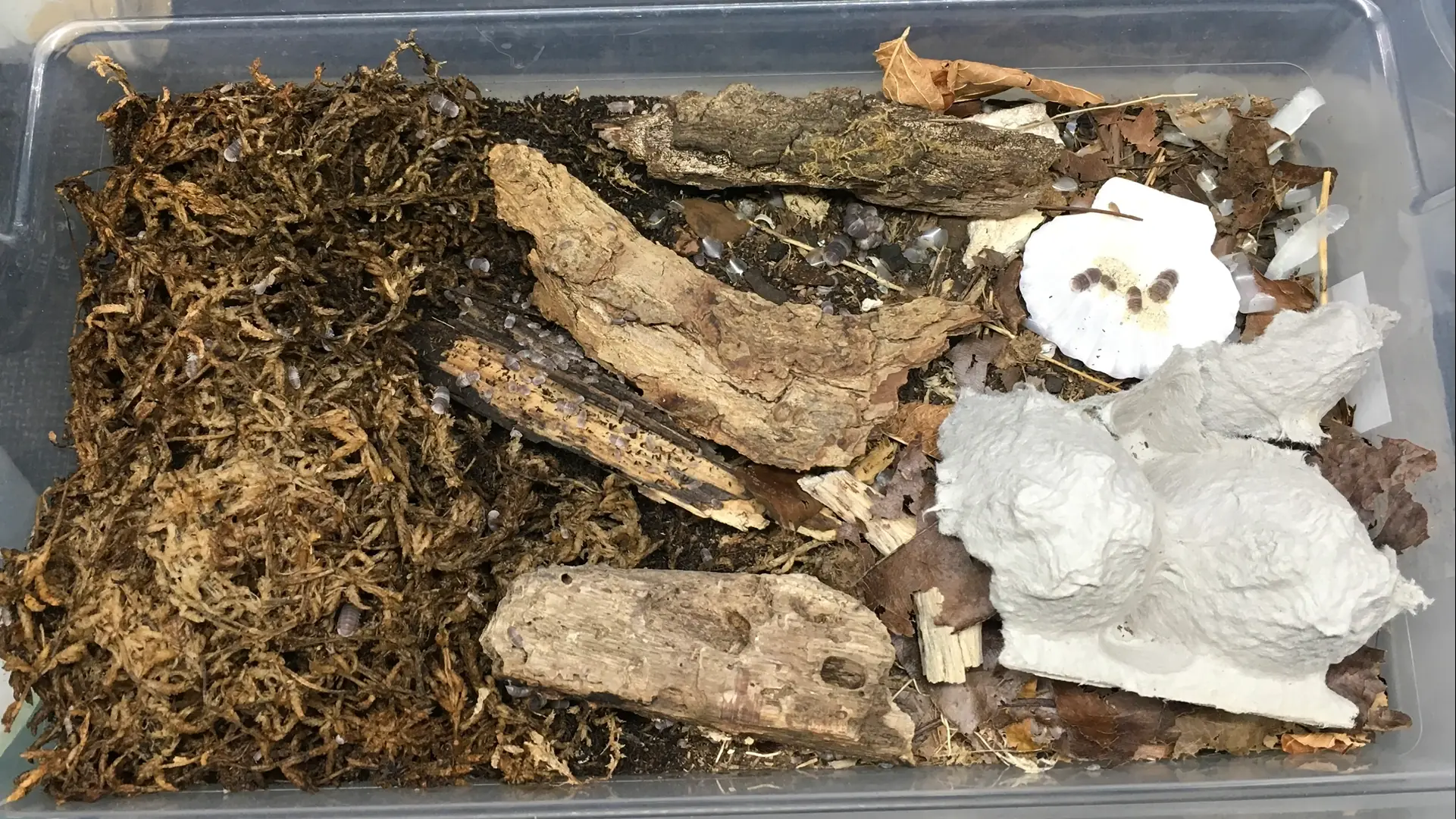As an enthusiast of terrariums and all the tiny creatures that inhabit them, I’m excited to share my knowledge about one of the most fascinating isopods out there: the Cubaris Panda King. If you’re interested in learning more about these little critters and how to care for them, you’ve come to the right place.
I’ve been keeping these creatures for years and have gained a wealth of knowledge about their needs, habits, and unique characteristics. In this article, you’ll learn to care for the Cubaris Panda King, in a detailed yet simple manner. I’ll also provide a list of popular vendors that sell them internationally.
Enjoy!
When you buy the Cubaris Panda King, you’ll typically receive 10-25 juvenile isopods, and a culture start-up system of peat moss, isopod food, and oak leaves. Everything you need to get started.
Here are the most popular vendors for isopods that you can shop from:
The Panda King is a unique species of isopod that is highly sought after by terrarium enthusiasts due to its distinct black-and-white coloring. They typically grow to be around 2 cm in length and 1 cm in width, with a slightly curved body shape. The black and white coloration of the Panda King isopod is not only striking, but it also serves as a natural form of camouflage in the wild.
Panda Kings are sexually dimorphic, meaning males and females have different physical characteristics. Males are generally larger than females, and they have broader pleopods (the appendages on their underside used for swimming). Females, on the other hand, have a slightly wider body shape, which allows them to carry and protect their young.

Here’s everything you need to know about caring for these amazing creatures.
To create a suitable habitat for Panda King Isopods, you will need to replicate their natural environment as closely as possible. The best way to do this is by using a terrarium. Here are some tips for creating a habitat for your Panda King Isopods:
By following these tips, you can create a suitable habitat for your Panda King Isopods and ensure that they thrive in their new environment.
Feeding Panda King Isopods is easy, and they are not picky eaters. You can feed them a variety of foods, including:
It’s important to ensure that their food is fresh and not spoiled.
One of the best ways to feed your Panda Kings is to scatter the food across the substrate in their enclosure. This allows them to forage for their food, just like they would in the wild. It’s also important to provide them with a source of calcium, such as cuttlebone or calcium powder.
When feeding your Panda Kings, make sure to remove any uneaten food after a day or two. This helps prevent mold and other harmful bacteria from growing in their enclosure.
You don’t need to feed your Panda King Isopods every day, however, it’s a good idea to provide fresh food at least once a week to ensure their nutritional needs are met.
Panda King Isopods are relatively low-maintenance pets, but there are a few things to keep in mind to ensure their health and happiness.
The Panda King isopods are prolific breeders, and with the right conditions, they can reproduce rapidly.
After introducing them to an environment, you can expect to see babies within a few months. If you keep them in ideal conditions, as we discussed, you will not have any problems.
Here are some important things to keep in mind when breeding Panda King Isopods:
If you’re interested in terrariums and tiny creatures, the Cubaris Panda King isopod is a unique species worth considering. These isopods are highly sought after for their distinct black-and-white coloring, and they are relatively low maintenance as pets. Providing them with suitable a habitat, fresh food, and regular monitoring can help ensure their health and happiness. With the right conditions, they can reproduce rapidly. Overall, the Panda King isopod is a fascinating and rewarding pet for enthusiasts who are willing to provide the care they need.